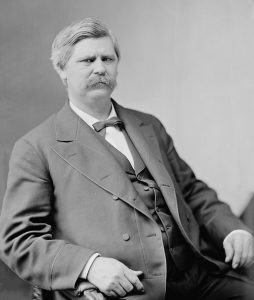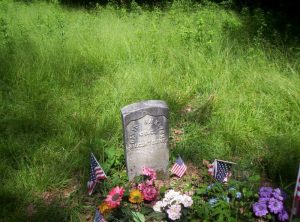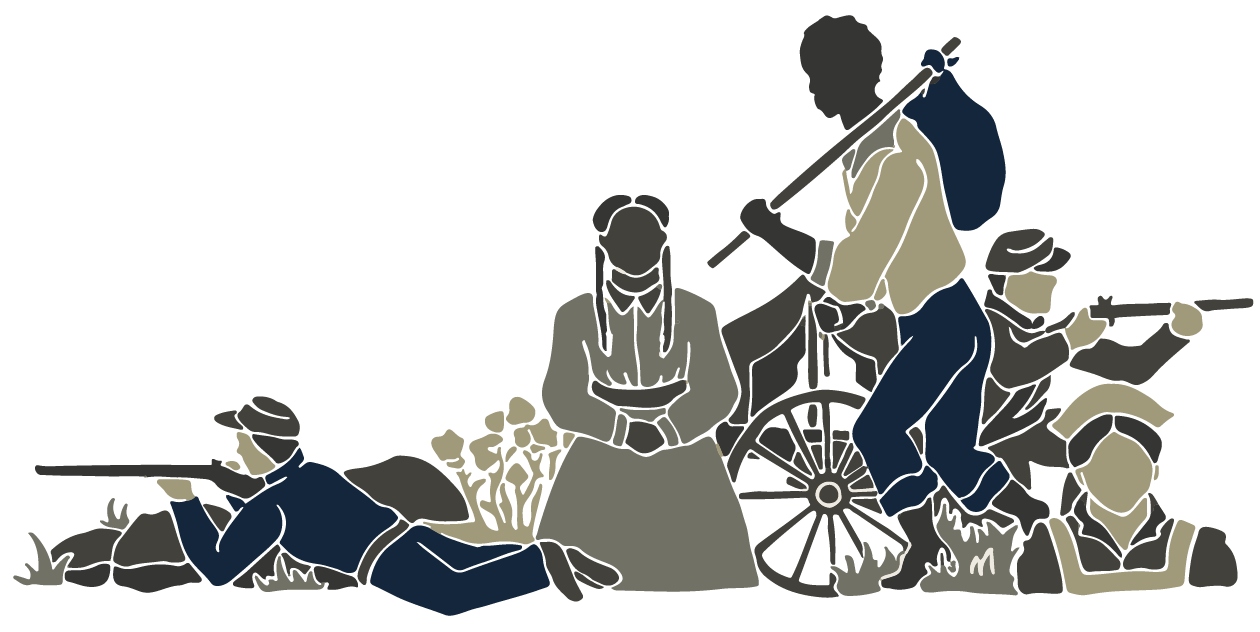By Allie Bochna
“We, the members of this Secret Circle, are Union men who believe that the ‘so called Confederacy’ is wrong and treasonable, and know it to be tyrannical: We therefore owe it no service and will give it none voluntarily. We will use every secret means in our power, to injure the Confederate cause and to aid the Union.”[1]
This pledge of loyalty was the articles of formation of the “Home Circle” a secret unionist society within the Confederate Army during the Civil War. John Henning Woods was a southerner who supported the Union cause during the Civil War. However, even though he had unionist sentiment he was still conscripted into the Confederate Army. While in the Army, Woods became a member of the “Home Circle” which was made up of Union men who wanted to undermine the Confederate war effort.

Woods and the “Home Circle” were not the only group of southern unionists who took an active role in subverting the Confederacy during the Civil War. Throughout Western North Carolina southern unionists played an important role in threatening pro-secessionist government officials prior to North Carolina seceding from the Union in May 1861. Unionists continued retaliating against the Confederacy during the war years. Pro-Union groups existed throughout Western North Carolina with large concentrations of unionists in Madison, Yancey, and Randolph Counties as well as smaller surrounding counties.
Early Tensions in Western North Carolina
Prior to the Civil War southern unionists made up a majority of the population of Western North Carolina. In a letter from January 28, 1861, S.O. Deaver, a pro-secessionist farmer from Madison County, wrote to Zebulon B. Vance, a member of the United States House of Representatives, that three fourths of Madison County’s population was unionist, as was more than three fourths of neighboring Yancey County.[2] Even prior to the start of the Civil War in April 1861, many Union supporters in Western North Carolina took an active role in undermining the Confederate cause. These actions included Unionists in Buncombe County threatening to “tar and feather” pro-secessionist officials. Threats like this highlight that Unionists were not afraid to retaliate against the pro-secessionist government when North Carolina was on the brink of secession. Unionists wanted local officials to know that they were still loyal to the Union even though their state government might not be.
The local authorities did not ignore unionists’ actions against them and wanted to suppress anti-Confederate sympathy. An example of this suppression happened in Randolph County in October 1861, six months after the start of the Civil War. The Randolph County Court called for the arrest of unionist Thomas Dougan after he “used language in favor of the Federal government and against the Confederate government.”[3] Arresting Unionists was one of the many tactics Confederate officials used to suppress anti-Confederate sympathy.
Many North Carolinians opposed secession during the heated months of the Secession Crisis. One of the most prominent reasons individuals in Western North Carolina supported the Union was because of their unwavering loyalty to the United States. In the eyes of unionists, secession was the ultimate betrayal to their country.
The Heroes of America’s Fight Against the Confederacy
When North Carolina seceded from the Union in May 1861 pro-Union sentiment was not crushed; it continued during the war years. Unionists formed groups such as the Heroes of America (HOA), which is believed to have had ten thousand members during the war.[4] The goal of the HOA was to“[hold] the mountain region against the Rebel Government.”[5] The HOA instilled fear in the Confederate forces through the use of aggressive and threatening tactics. This included “bushwhacking”, a form of guerrilla warfare, which encompassed shooting Confederate Army officers.[6] The Confederate officials in Western North Carolina saw the HOA’s actions as acts of treason and a threat to the war effort.
Confederate Concern and Retaliation Against Unionist Societies
In January 1863 the Confederate authorities easily suppressed an uprising of unionists in Madison County. However, the Confederate government was still intimidated by the actions of these unionists. Confederate officials decided to keep troops in Madison County “as long as necessary for the protection of loyal citizens and their property.”[7] This illustrates that unionist societies were successful at intimidating Confederate authorities. These authorities felt that it was necessary to provide protection to loyal Confederate residents because of the actions of unionist societies.

In January, 1863, unionists raided a storehouse in the small town of Marshall, in Madison County. Lieutenant Colonel J.A. Keith, who was in charge of a regiment of Confederate troops, was infuriated by the Unionists actions. Keith and his men killed a group of thirteen unionists, who they suspected of being part of the raid. Of the thirteen men killed three of them were under the age of eighteen. This event would be known as the Shelton Laurel Massacre.
Conclusion
Unionist Societies existed in the Confederate Army and on the home front. On the home front, secret societies such as the Heroes of America wanted to weaken the Confederacy through the use of guerrilla warfare and threats. Secret Societies were successful in creating a sense of fear and uncertainty within the Confederate ranks.
Notes
[1]John Henning Woods Memoir, Vol. 2, p. 36, John Henning Woods Papers, Ms2017-030, Special Collections, Virginia Polytechnic and State University, Blacksburg, Va.
[2]S.O. Deaver to Zebulon B. Vance, 28 January 1861, Zebulon Baird Vance Papers, State Archives of North Carolina, Raleigh, N.C.
[3]Court document from Randolph County”, Miscellaneous Civil War Records, State Archives, North Carolina, quoted in William T. Auman, “Neighbor against Neighbor: The Inner Civil War in the Randolph County Area of Confederate North Carolina”(Raleigh: North Carolina Office of Archives and History, 1984), 63.
[4]William T. Auman and David D. Scarboro, “The Heroes of America in Civil War North Carolina,” The North Carolina Historical Review, 58, no. 4 (1981): 327.
[5]“Important from North Carolina.” Sunbury American, (Pennsylvania) June 27, 1863.
[6]“A Glimpse of the South,” The West Virginia Journal, January 25, 1865.
[7]United States War Department. The War of the Rebellion: A Compilation of the Official Records of the Union and Confederate Armies Series 1, Vol.18. Washington D.C., Government Print Office, 1887: 853.
Further Reading
Auman, William T. and Scarboro, David D. “The Heroes of America in Civil War North Carolina.” The North Carolina Historical Review, 58, no. 4 (1981)
“Shelton Laurel Massacre”, http://northcarolinahistory.org/encyclopedia/shelton-laurel-massacre/
Inscoe, John C. and McKinney, Gordon B. The Heart of Confederate Appalachia: Western North Carolina in the Civil War
Myers, Barton A. Rebels against the Confederacy: North Carolina’s Unionists
Paludan, Phillip S. Victims: A True Story of the Civil War
About the Project
This page was created as part of an undergraduate research seminar taught in the Virginia Tech History Department by Professor Paul Quigley in Fall 2017. Views and opinions belong to the student authors.
Return to The John Henning Woods Online Exhibit main page.
